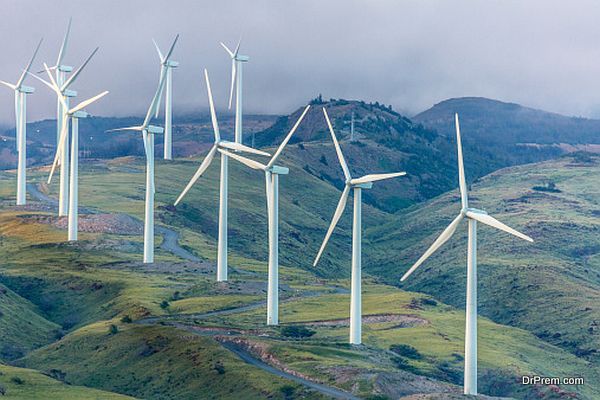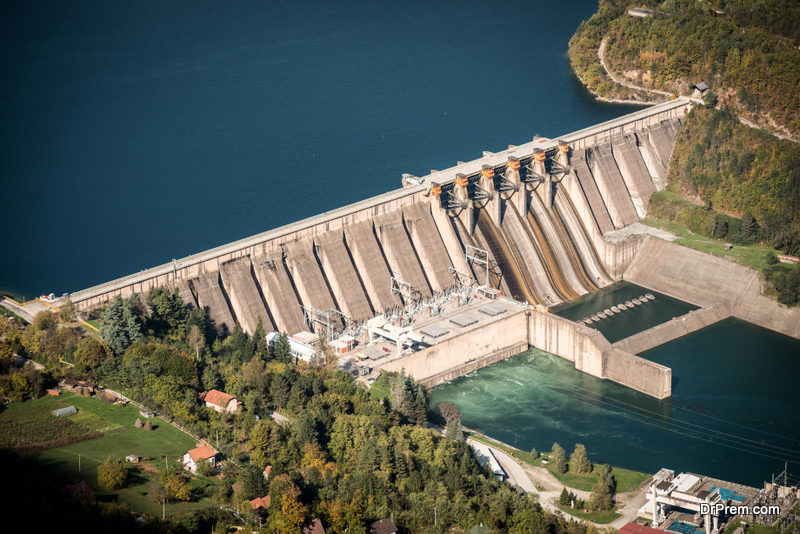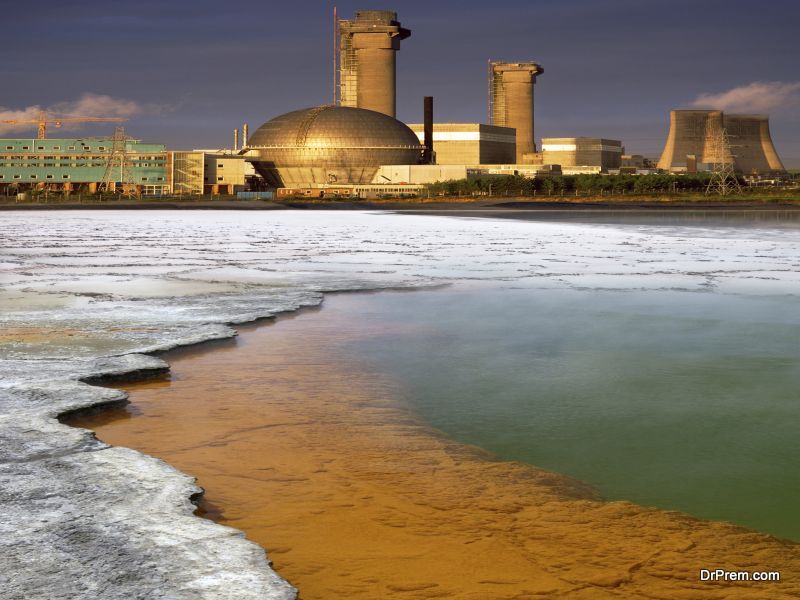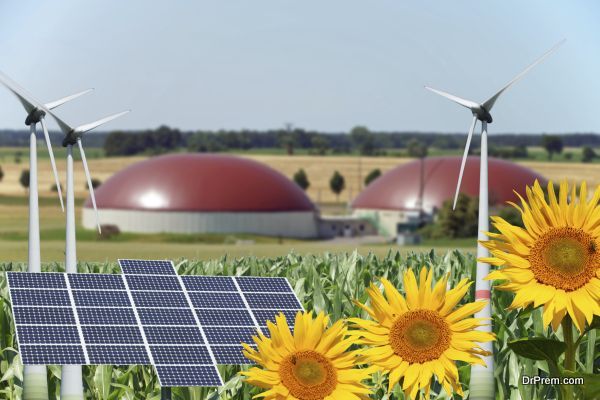Dwindling reserves of conventional energy sources is on the path to present a major roadblock to the modern lifestyle. Since the discovery of fossil fuels, the world’s industrial growth has spiked up with tremendous speed. But this growth has left a trail of issues ranging from pollution to exhausted resources. This necessitates the quest for the most efficient renewable source of energy.
Fossil fuels like coal, petroleum and natural gas are non-renewable resources. Available in fixed quantities on earth, these are on the verge of exhaustion. Rampant use of fossil fuels and lower emphasis on renewable energy sources have several detrimental effects on the environment.
Soaring global temperatures and a corresponding degradation of air and water quality demand major remediation measures. This is where renewable sources of energy with the least carbon emission come into the picture. Apart from substituting conventional energy sources, these are crucial in neutralizing the environmental damage caused by fossil fuels.
Shift Towards Cleaner and Greener Energy Sources
 Nature is the ultimate source for green energy sources which can be harnessed to meet the energy requirements of the world. These resources are free and have huge untapped potential to provide an endless supply of uninterrupted power. Renewable energy sources, when channeled properly, can meet energy requirements without causing much dreaded-pollution.
Nature is the ultimate source for green energy sources which can be harnessed to meet the energy requirements of the world. These resources are free and have huge untapped potential to provide an endless supply of uninterrupted power. Renewable energy sources, when channeled properly, can meet energy requirements without causing much dreaded-pollution.
From solar energy to tidal power, the earth is blessed with several renewable resources which are replenished on their own. They leave minimal impact on the environment, making them preferable than non-renewable sources of energy. Some of them can be considered as the most efficient renewable source of energy due to their large- scale practical applications.
Whether it is about residential or commercial usages, renewable offers hope. All you need to do is to get an energy storage system that fits your needs and requirements and store the renewable energy. The system ensures that you always have stored potential energy that can be converted into kinetic form whenever you need it to. The energy storage system can be connected to power all your home appliances from air conditioners to lights and fans.
Reducing Carbon Footprints with the Most Efficient Renewable Source of Energy
 Copious amount of carbon emission directly translates to a more pronounced effect on global warming. Years of reckless exploitation of non-replenishable energy sources has had deleterious effects on the earth’s health. Deteriorating air quality is an indicator of the fact that a shift towards renewable energy sources is imminent. Adoption of renewable energyis crucial for a more sustainable step towards restoring energy needs.
Copious amount of carbon emission directly translates to a more pronounced effect on global warming. Years of reckless exploitation of non-replenishable energy sources has had deleterious effects on the earth’s health. Deteriorating air quality is an indicator of the fact that a shift towards renewable energy sources is imminent. Adoption of renewable energyis crucial for a more sustainable step towards restoring energy needs.
Continuous research and experiments have made it possible for us to derive a more usable form of renewable energy sources. The shift is gradual but steady towards restoring the ecological balance of the earth.
The Omnipotent Solar Energy

Sun is the ultimate source of energy. Tiny silicon embedded photovoltaic cells can convert solar energy into a storable form of electricity. Since 1992, Japan has been the pioneer in research and development of solar energy harnessing cells. With the least carbon emission and unlimited supply, large scale use of solar panels have become popular.
Regions on Earth which receive plenty of sunshine through most days of a year are at a special benefit when it comes to solar energy. Solar installations come in various sizes depending on the scale of energy requirement. Governments of various nations are offering special aid towards solar installations to make it a viable choice for everyone.
Containing the Energy of Wind

The potential of wind energy can be realized from the scale of destruction it can cause during storms and cyclones. Harnessing this powerful energy using huge wind turbines can provide both mechanical and electric energy. Installation of wind farms to amass large scale wind energy has seen a rise since 2005. Wind turbines have a very low impact on the environment and research is on to develop low cost installations.
Renewable energy sources comparison ranks wind energy as the smallest contributor in meeting world energy needs. But countries with favorable and steady wind conditions have shown remarkable progress in using wind energy. Denmark is the world leader in electricity production from wind, followed by Spain and Portugal.
Energy from Flowing Water
 Rivers are in a continuous state of motion, generating energy on large scale. Hydropower is essentially the energy generated by the action of gravitational force on flowing water. Considered as the most efficient renewable source of energy, hydropower can be tapped by the construction of dams and hydropower complex.
Rivers are in a continuous state of motion, generating energy on large scale. Hydropower is essentially the energy generated by the action of gravitational force on flowing water. Considered as the most efficient renewable source of energy, hydropower can be tapped by the construction of dams and hydropower complex.
Electricity generated by rivers has been used extensively around the world. Its feasibility and popularity can be understood from the fact that it meets 19% of the world energy needs. Perennial rivers offer a greater advantage in generating hydroelectricity. Small scale hydroelectric projects do not affect the environment adversely and require one-time investment only.
Geothermal Energy

Regions with the geographical advantage of underground tectonic or volcanic activities are blessed with hot water springs. These naturally heated sources of water provide a continuous supply of heat and steam.
When channeled properly using modern technology, geothermal springs can be used to generate electricity on varying scales. USA is the largest producer of electricity using geothermal power plants. More efforts are being put in the direction of reducing drilling and extraction costs.
Nuclear Technology to Tap Radioactive Power
 After being used for large scale destruction, the potential of energy trapped in atomic nuclei was realized. Controlled nuclear fission reaction generates energy which is the most economical when sources comparison is made. Uranium and Plutonium are commonly used radioactive
After being used for large scale destruction, the potential of energy trapped in atomic nuclei was realized. Controlled nuclear fission reaction generates energy which is the most economical when sources comparison is made. Uranium and Plutonium are commonly used radioactive
Nuclear power plants over the world produce 14 % of the total electricity in use, France being the front runner in nuclear power use. Nuclear energy has emerged as a major power source when compared to the least effective methods like hydrogen gas and ethanol production. Nuclear energy doesn’t emit any greenhouse gases but requires careful disposal of nuclear wastes. Efficient recycling of radioactive waste can recover up to 95% of the element from spent fuel.
Biogas Biofuel

Systematic biodegradation of biological wastes can generate biogas and biodiesel, which are collectively known as biomass energy sources. Deriving biomass energy is cheap and it works towards recycling of biological wastes. It is highly preferablewhen its impact on the environment is considered.
Biomass energy requires maintenance of sustainable plantations and livestock to meet the requirements of wood, gas, biodiesel, ethanol and biogas. Methane is the major component of biogas derived from biodegradation of human, animal and plant wastes. Oil derived from plants like Jatropha and palm can be used as petrol/diesel substitutes.
From an energy point of view, it may be least effective, but its cost effectiveness is driving greater research to make it feasible for large scale use.
Ocean Energy
 Oceans contain 99% of the water on Earth, which offer usable energy in the form of tidal and wave energy. Although bound by geographical restrictions and high installation costs, tidal farms are operational on the coasts of America and Europe.
Oceans contain 99% of the water on Earth, which offer usable energy in the form of tidal and wave energy. Although bound by geographical restrictions and high installation costs, tidal farms are operational on the coasts of America and Europe.
Wave energy is tapped by buoyant energy converters to provide electricity via a snaking motion. The widespread commercial application of wave and tidal power is yet to be realized.
Feasibility and affordability are key features of the most efficient renewable source of energy. The world is pressed for time to save the environment, without compromising on energy supply. Exclusive research towards the development of existing and newer renewable sources can open a new array of replenishable energy sources.


